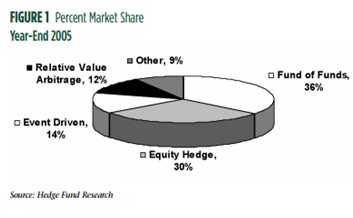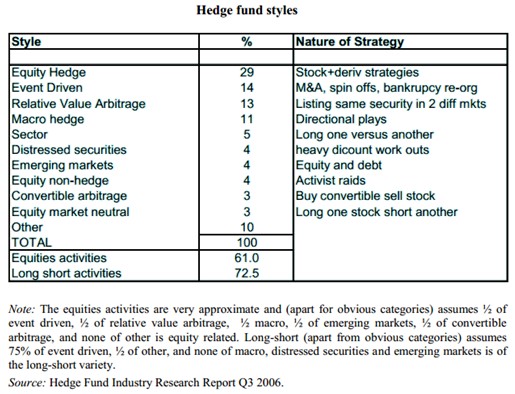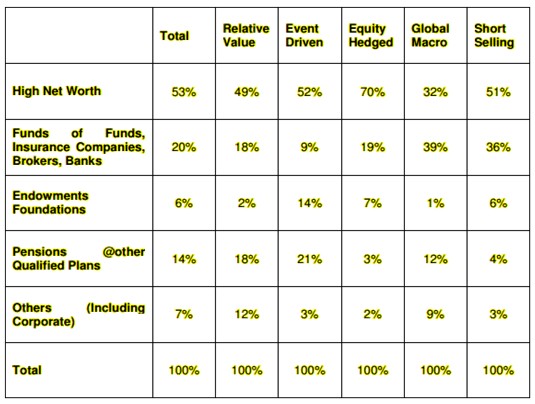All the subtypes of this strategy try to exploit price fluctuations or market inefficiencies.
Emerging Markets
The strategy is a resourceful category for funds that invest in assets beyond those based in their home market. An example would be a hedge fund investing in an emerging market such as India. These are funds focusing on emerging markets with less-developed economies and aim to profit from market growth or economic conditions which positively affect particular securities in the emerging market. Hedge funds which use this strategy will purchase securities in the emerging market such as sovereign debt or corporate securities in the belief that their value will appreciate with economic growth.
The emerging market strategy is usually more volatile (or risky) than others because of the nature of the underlying market and the lack of defensive financial tools available. The source of risk of emerging markets can be seen as the lack of information, the uncertainty of political and economic stability, the unsophisticated nature of the investors, poor accounting and less experienced managers.
Global Macro
The Global Macro strategies utilise macroeconomic analysis to capitalize on asset price changes that are strongly linked to macroeconomics e.g. currencies, bonds, stock in- dices, and commodities. A hedge fund that used this strategy in the past is George Soros’s Quantum Fund. This fund made US$ 1 billion in 1 day on September 1992 by speculating the British Pound would exit the European Exchange Rate Mechanism.
Global macro funds make investments based upon appraisals of international conditions, such as.
- Interest rates,
- Currency exchange rates,
- Inflation,
- Unemployment,
- Industrial production,
- Foreign trade, and
- Political stability.
Global macro funds receive the most scrutiny when hedge funds are accused of undermining global stability. Global macro traders may use leverage, short sales, or derivatives to maximise returns. Some funds specialise in illiquid assets in emerging markets, which sometimes have financial markets that do not allow short sales or do not offer derivatives on their securities.
Long-Short Equity
Long-short hedge funds focus on security selection to achieve absolute returns, while decreasing market risk exposure by offsetting short and long positions. Compared to a long-only portfolio, short selling reduces correlation with the market, provides additional leverage, and allows the manager to take advantage of overvalued as well as undervalued securities.
Derivatives may also be used for either hedging or leverage. Security selection decisions may incorporate industry long-short i.e. buying technology and shorting natural resources, or regional long-short like buying Latin America and shorting Eastern Europe. The traditional long-short position is to pick two closely related securities, short the perceived overvalued one and long the undervalued one. For example, one may go long on General Motors and go short on Ford Motors. This example has the greatest risk reduction because the two stocks are likely to have very correlated market risk exposures. The pair-trade removes most of the market risk.
Long-short portfolios are seldom completely market-neutral. They typically exhibit either a long bias or short bias, and hence they have a corresponding market exposure, either positive or negative. They are also very to be exposed to other market-wide sources of risk, such as style or industry risk factors.
Short Selling Bias
The strategy is to maintain net short as opposed to pure short exposure. Short biased managers take short positions in mostly equities and derivatives. The short bias of a manager’s portfolio must be constantly greater than zero to be classified in this category. A number of hedge funds employ short selling as their dominant strategy.
Equity Market Neutral Strategy
Market neutral investment refers to funds that hedge against market risk factors, thereby becoming “neutral” to the market. This strategy provides returns by speculating on relative price movements between assets or indexes. These strategies are known as market neutral due to several key characteristics.
Market neutral funds tend to take positions which offset each other through both a long and a short position simultaneously, in order to minimize their net position exposure with respects to risk and return. Also known as Statistical Arbitrage, this strategy is based on quantitative models in order to identify trading opportunities.
Managers will match long positions of outperforming stocks with short positions of under- performing stocks. As such, equity market neutral managers hedge their fund from systemic shock or events that may affect the valuation of the market in its entirety. This strategy, in using short and long portfolios of equal size, can be applied in all market or style segments such as geographic, sector, industry or investment strategy.
Equity market neutral strategists traditionally use fundamental valuation modeling and back testing to find statistically significant return opportunities. Trading on fairly large amount of stocks, managers in this style are often able to reduce market risk, industry risk and stock specific-risk.
This strategy benefits the final investor in the hedge fund. If the final investor knows that the hedge fund allocation will not affect his/her overall portfolio’s sensitivity to market movements, then the contribution of the hedge fund to portfolio volatility is greatly reduced.
Market neutral investment is connected to the concept of ‘portable alpha’. Suppose that a stock selector has superior information about the returns of a collection of assets. This information can be used to outperform the market benchmark by over-weighting those securities with forecasts of positive returns and underweighting (or zero-weighting) those with forecast negative returns. The stock selector can exploit the superior information via a hedge fund. One can take long positions in the securities that he expects to have positive returns and short positions in securities where the individual expects negative returns. Due to the excellent information, the stock selector has “portable alpha” which can be implemented either via a hedge fund or via a traditional active fund.
By using a market-neutral hedge fund to exploit his superior information, the stock selector/fundamental analyst allows final investors to make their own choices about the market risk exposures of their aggregate portfolios. With the traditional active fund, the choice of market risk exposure is bundled together with the stock selection decisions.
Sector
Hedge funds which have particular expertise within certain industries may focus on specific Sector funds which invests in a particular sector such as technology, pharmaceuticals, and utilities or any other market sector. These investments usually consist of long or short positions in the stock, debt or even derivatives on the sector stocks.



Apply for Hedge Fund Certification!
https://www.vskills.in/certification/certified-hedge-fund-manager

